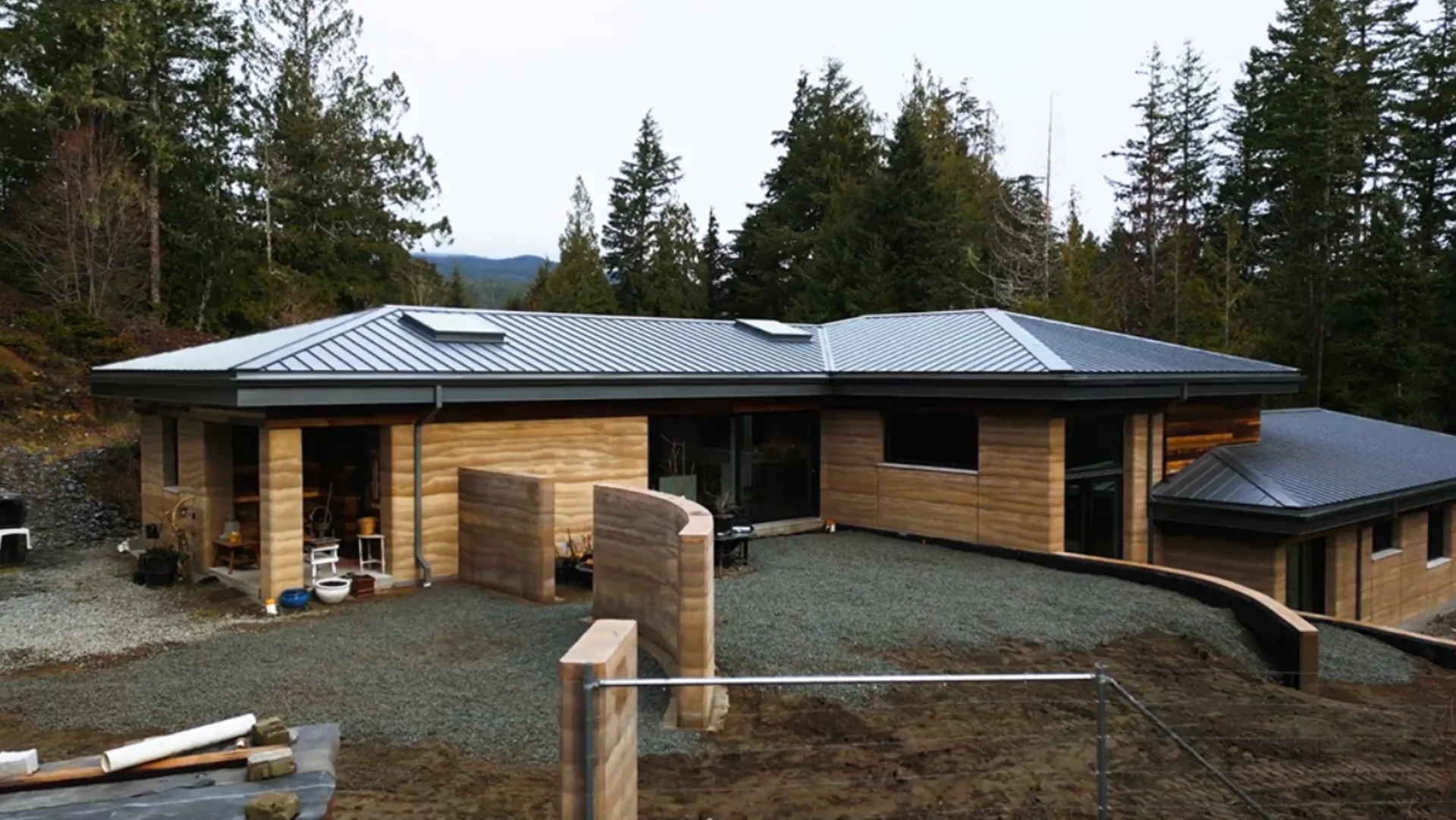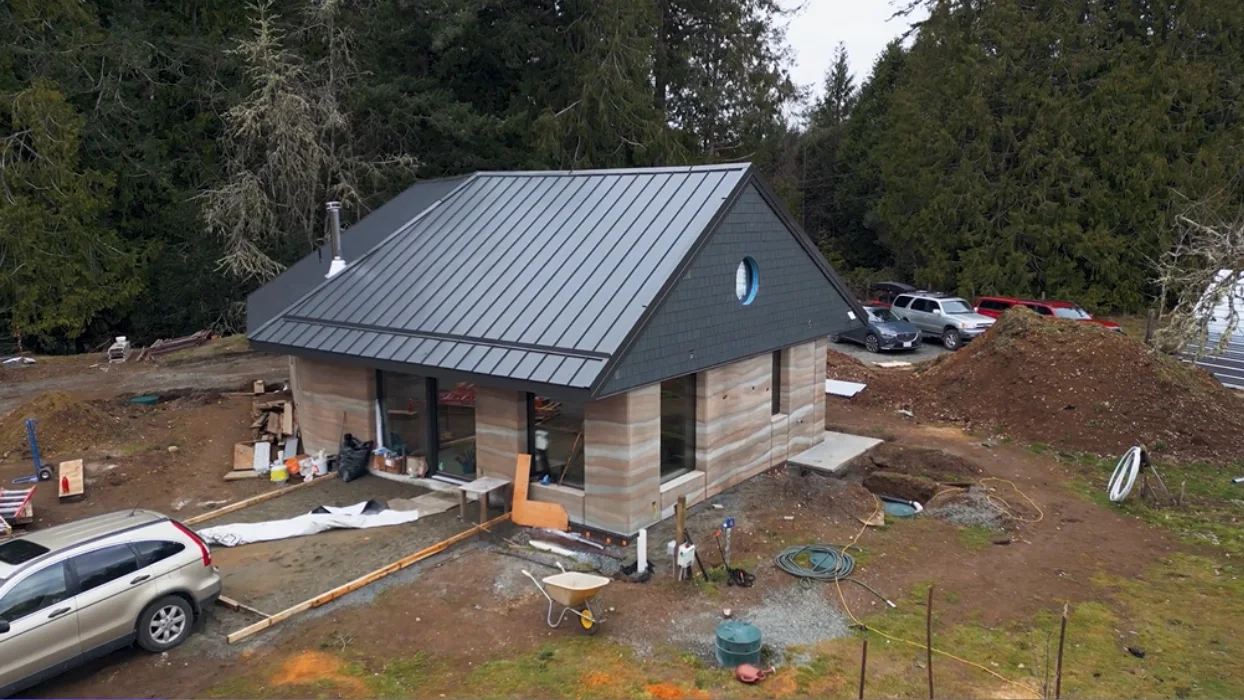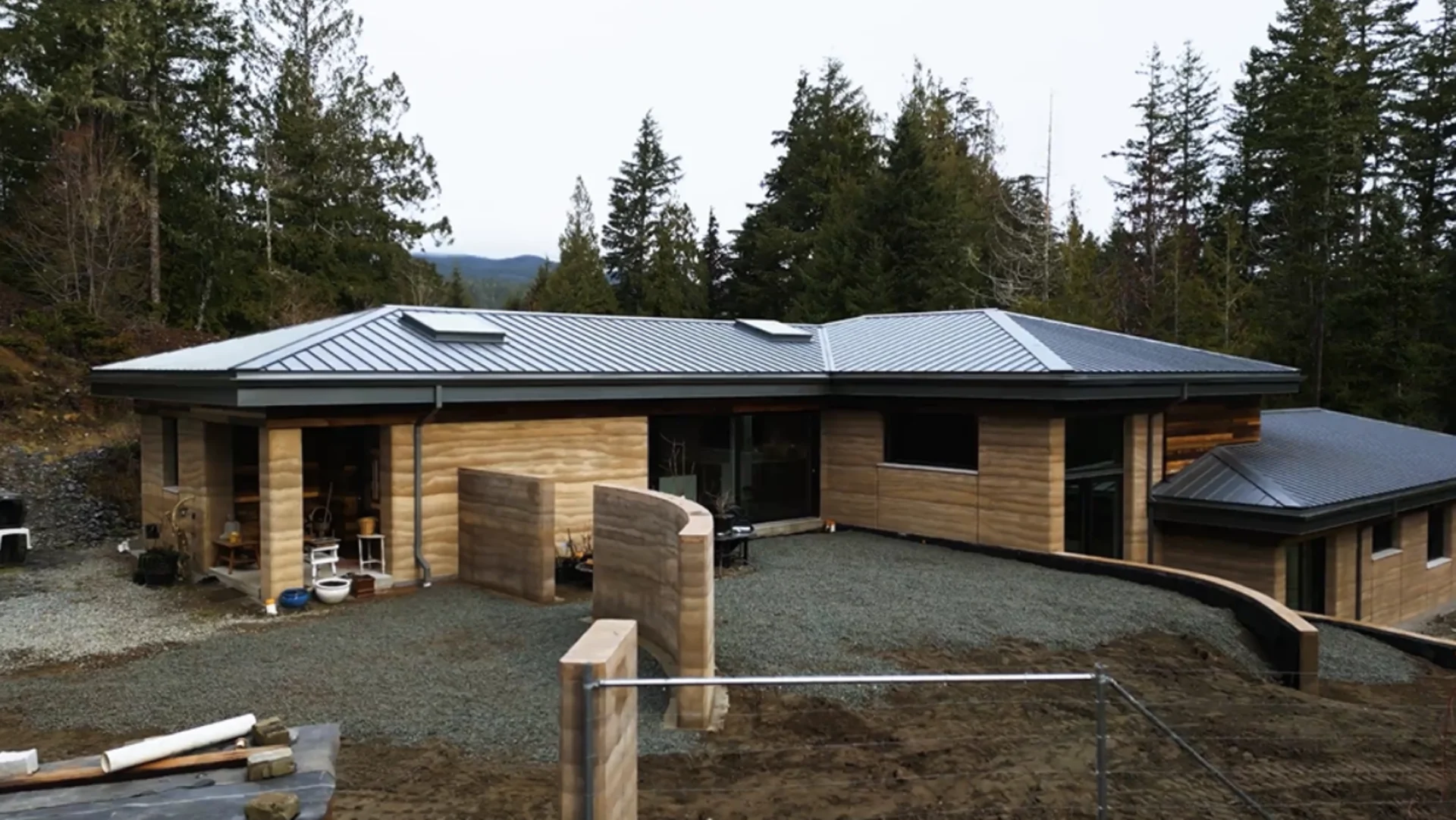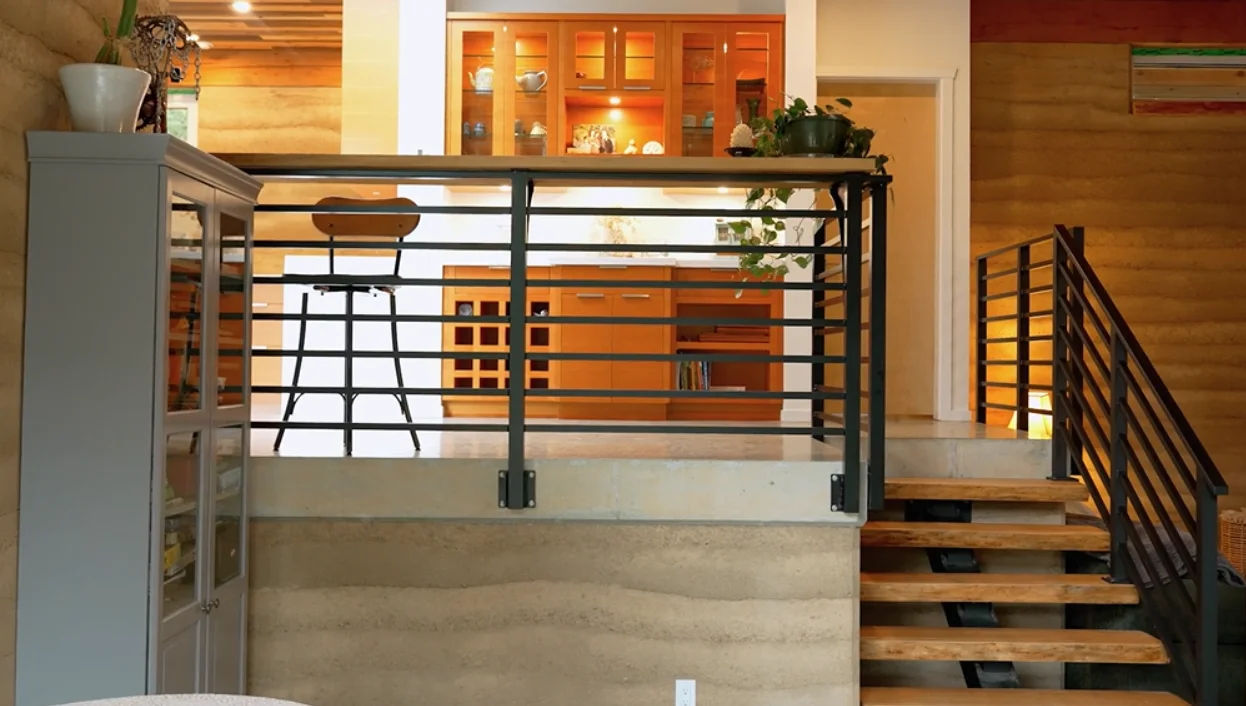
Rammed Earth Homes: Ancient building technique sees a sustainable resurgence
The Weather Network's new series, "Building Better," delves into the fresh and inventive approaches people and businesses are adopting to construct in response to our current climate challenges. In this episode, reporter Michael Vann heads to Sooke, B.C., to step inside an ancient building technique that is seeing a sustainable resurgence.
It was early in the morning in Sooke, B.C., when I arrived at Tony Johnson’s rammed earth house. I got out of the car and walked up the driveway to get my first real glance at the home. Standing just above us, no more than 10 meters away, a family of deer watched us all say hello. It was at that moment that I began to fully appreciate how much rammed earth homes allow you to live fully surrounded by nature, including the walls that protect you.
It was my first visit to Vancouver Island, and everywhere I turned, I was just astonished by the beauty, nature, and ever-changing weather. Up until this moment, I had only experienced rammed earth houses through digital media. From the first time I saw this architectural technique, I was intrigued by the idea that you could live in a home made of clay. The intricate patterns and textures of the structure took me by surprise, drawing me in with its tactile surface that beckoned for exploration and engagement.

The earth home building technique is extremely energy efficient due to the thermal mass and thermal break created by the insulation. (The Weather Network)
Chances are, you’ve likely seen a rammed earth structure if you’ve travelled to many parts of Europe or have even just seen videos or photos of the Great Wall of China. They aren’t very common here in North America, especially in the more northern regions we see here in Canada. As we face a global climate crisis and a housing crisis, many people are looking at new technologies for building practices. Others, like Tony’s company, Earth House Holdings, are looking to the past.
The revamped rammed earth process combines the traditional method of building with new technology like steel rebar, wool insulation, and less than 10 per cent concrete. The result offers exceptional strength when it comes to earthquakes and a much more insulated envelope for our colder climate. The green building technique is extremely energy efficient due to the thermal mass and thermal break created by the insulation. It is also an airtight material, which means that there’s little heat loss from a poor air barrier. Year-round, you’ll use much less energy on heating and cooling costs, especially during the extreme temperatures at the peak of the winter and summer months.

The airtight material used on earth homes means that there’s little heat loss from a poor air barrier. (The Weather Network)
One of the main reasons why Canadians may be interested in this building method is due to its ability to provide protection against wildfires. In the past few years, there has been significant damage caused by wildfires in Canada and globally. Clay, being naturally fire-resistant, can be used in combination with metal roofs and tempered glass to fortify homes against fires. By carefully designing a fire break around your property, you are ensuring top-notch defense in case a wildfire approaches.
Canada is currently experiencing a severe housing shortage dilemma. The Canadian government predicts a demand for an additional 3.5 million homes by 2030; although, there are concerns among experts that this estimate may fall short by almost a million. While conventional stick-built homes typically endure for 50 to 100 years, Tony Johnson advocates for rammed earth homes, which he argues have a significantly longer lifespan. Moreover, despite the utilization of approximately nine per cent concrete in these structures, Johnson asserts that their longevity through this construction method significantly diminishes the carbon footprint.

A look inside a rammed earth home built by Tony Johnson in Sooke, B.C. (The Weather Network)
Rammed earth offers a unique way to interact with the land and the environment and build a long-lasting legacy of sustainability. While we look for solutions to help navigate both the housing and climate crises, it’s exciting to see the ingenuity that’s driving Canadians to build better for the future.
To learn more about the resurgence of rammed earth homes, watch the video that leads this article.












